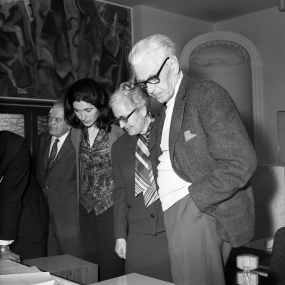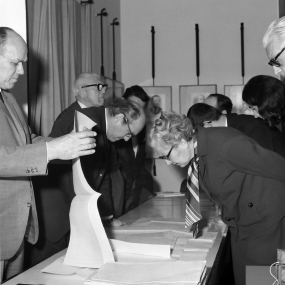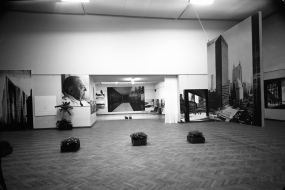Attempts at renewal and a reasonable use for one of the most famous villa structures in the world received a more concrete form at the beginning of the 1960s. The first concrete step was in December 1963 with the registration of Villa Tugendhat on the list of architectural cultural monuments. The main force behind these activities was the Brno architect František Kalivoda (1913-1971). He was capable of implementing and realizing numerous excellent projects in various areas of culture, from publications up to organisation of international events dedicated to renowned figures of Brno such as Viktor Kaplan or Adolf Loos even within the political and social atmosphere of Socialist Czechoslovakia of the time. Thanks to his specialised training in the area of architecture along with his remarkable personal contacts with world respected figures in the branch, he succeeded in intense work on the rehabilitation of the Villa. He established a personal correspondence with Grete Tugendhat who lived in Sankt Gallen in Switzerland at the time. She consequently visited Brno at his personal invitation in November 1967. Upon returning to Switzerland she wrote to Kalivoda: “I was in Brno last week for the first time in 29 years and horrified by the state of the house. By this I do not think that the children’s hospital is neglected, on the contrary it is kept very clean and is in fine condition. The construction changes which have been carried out, however, are so awful that one cannot even obtain a picture as to what the house originally looked like, with it no longer looking by any means attractive at present. Nobody would be able to imagine that this consisted of any particularly special work of construction.”
An exhibition on the work of Ludwig Mies van der Rohe took place in the Brno House of Arts from the 20th of December 1968 up until the 26th of January 1969 which had been prepared in two identical collections in Chicago and West Berlin. It came to Brno thanks to the initiative of the monument institute as well as the personal involvement of František Kalivoda. A one-day international working conference along with a lecture evening in the House of Arts that same day took place as part of the exhibition on the 17th of January 1969. Grete Tugendhat spoke at the event with a speech rendered in Czech on the circumstances and course of the construction of the Villa, concerning the interiors, the materials and the technical furnishings along with the communication between the commissioners and the architect. Here mention was made once again of Mies' 'I will not build'. “When my husband objected to the idea of having all of the doors reach from the floor all the way to the ceiling, because all the so-called specialists had told him that these kinds of doors would warp, Mies answered, then I will not build. This would have affected the main principle of the structure and he would not allow this to be a matter of discussion.” The exhibition was greatly successful. The personal participation on the part of Grete Tugendhat along with the architect Dirk Lohan, the grandson of Ludwig Mies van der Rohe, who could not come to Brno at the time, created high hopes for the renewal of the Villa. Mies' Chicago office was prepared to cooperate on restoration of the Villa.
František Kalivoda discussed the renewal of the garden with the co-author of the project Markéta Roderová-Müllerová in April 1969 who was ready to prepare a plan for planting the garden in accordance with Mies’ concept. There were also considerations regarding a plan for connecting the Tugendhat Villa garden with the garden of the Löw-Beer villa, this having originally made up a territorial whole, although not an architectural one.
After the occupation of Czechoslovakia in the year 1968 and in particular after the emergence of the political lines in the year 1969 the situation changed dramatically with the liberalized conditions brought to a halt. Despite the fact that Grete Tugendhat was able to visit Brno several more times up until April 1970, attempts at renovation of the Villa were discouraged. A definitive full stop to this stage came about with the deaths of the main protagonists of all the activity (Ludwig Mies van der Rohe passed away in August 1969, Grete Tugendht in December 1970 and František Kalivoda in May 1971). The architect’s daughter Georgia van der Rohe was even forbidden to carry out shooting in the Villa for a film about the life and work of her father in the year 1979.
Villa Tugendhat moved from the property of the state to the property of the City of Brno in the year 1980 with a new stage in its history consequently beginning. This consisted of a compromise, but a necessary and beneficial step in the end.


